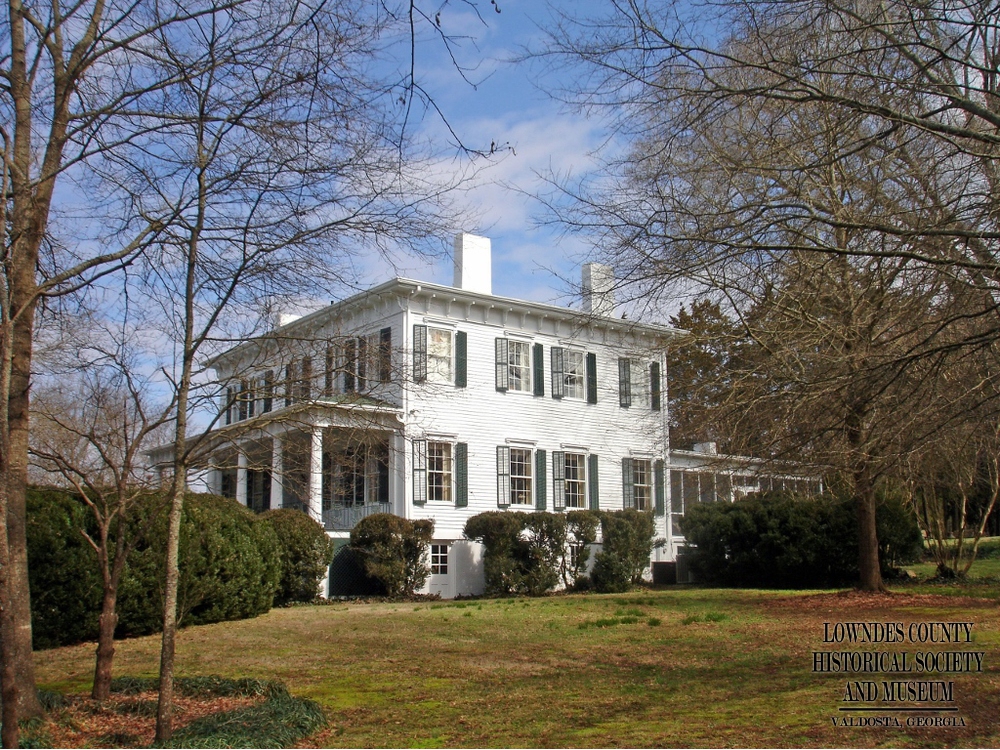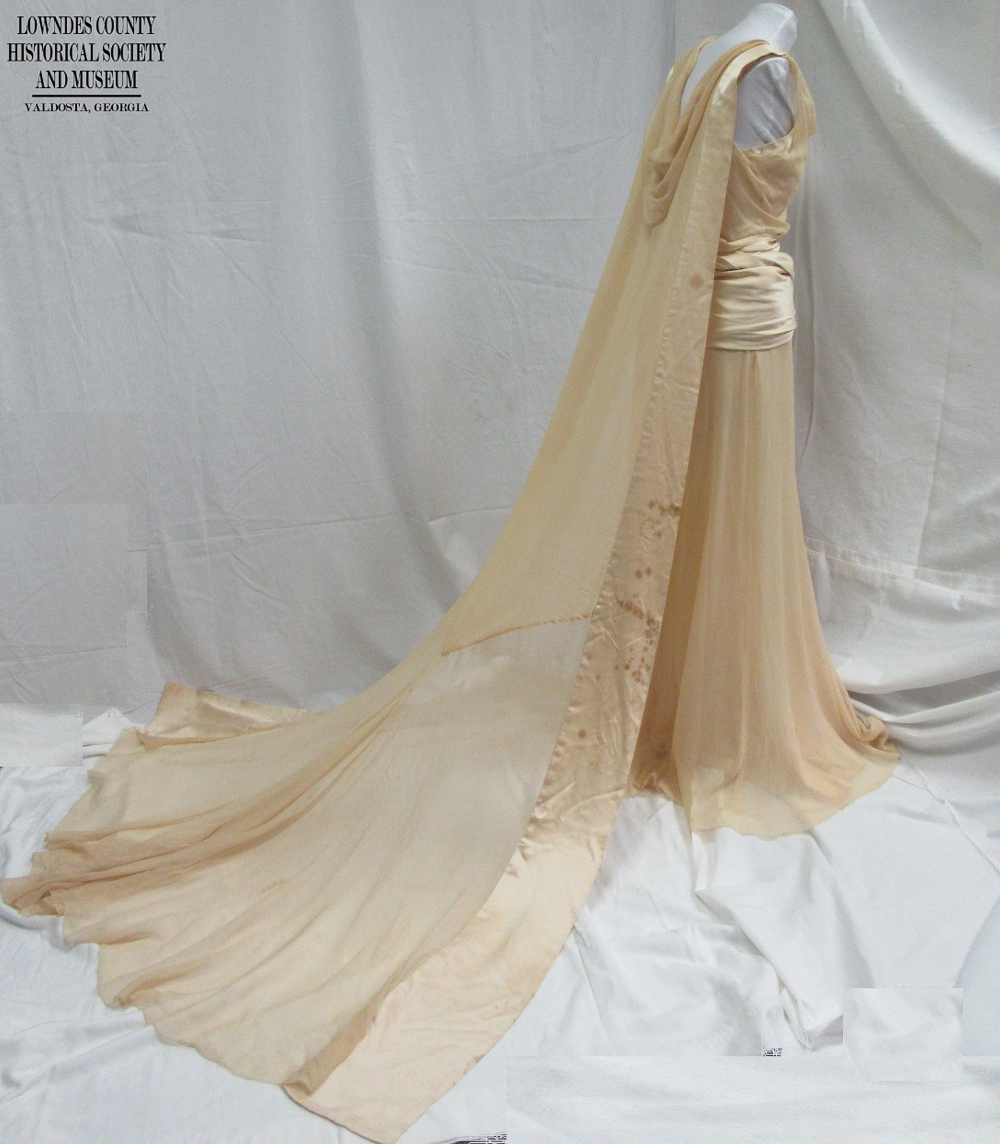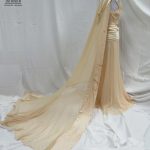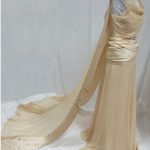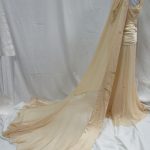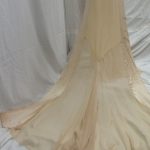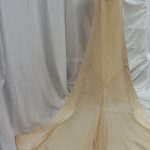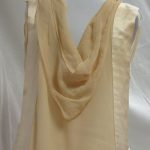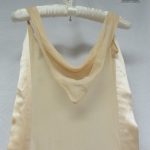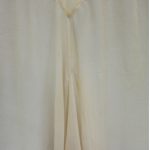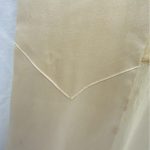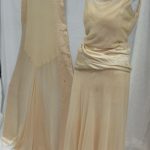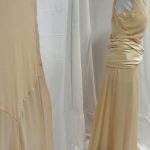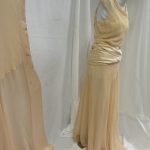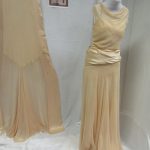Eulalie Converse “Honey” Harris’s Court of St. James Dress 2015-47 TB 4R2 Sd2
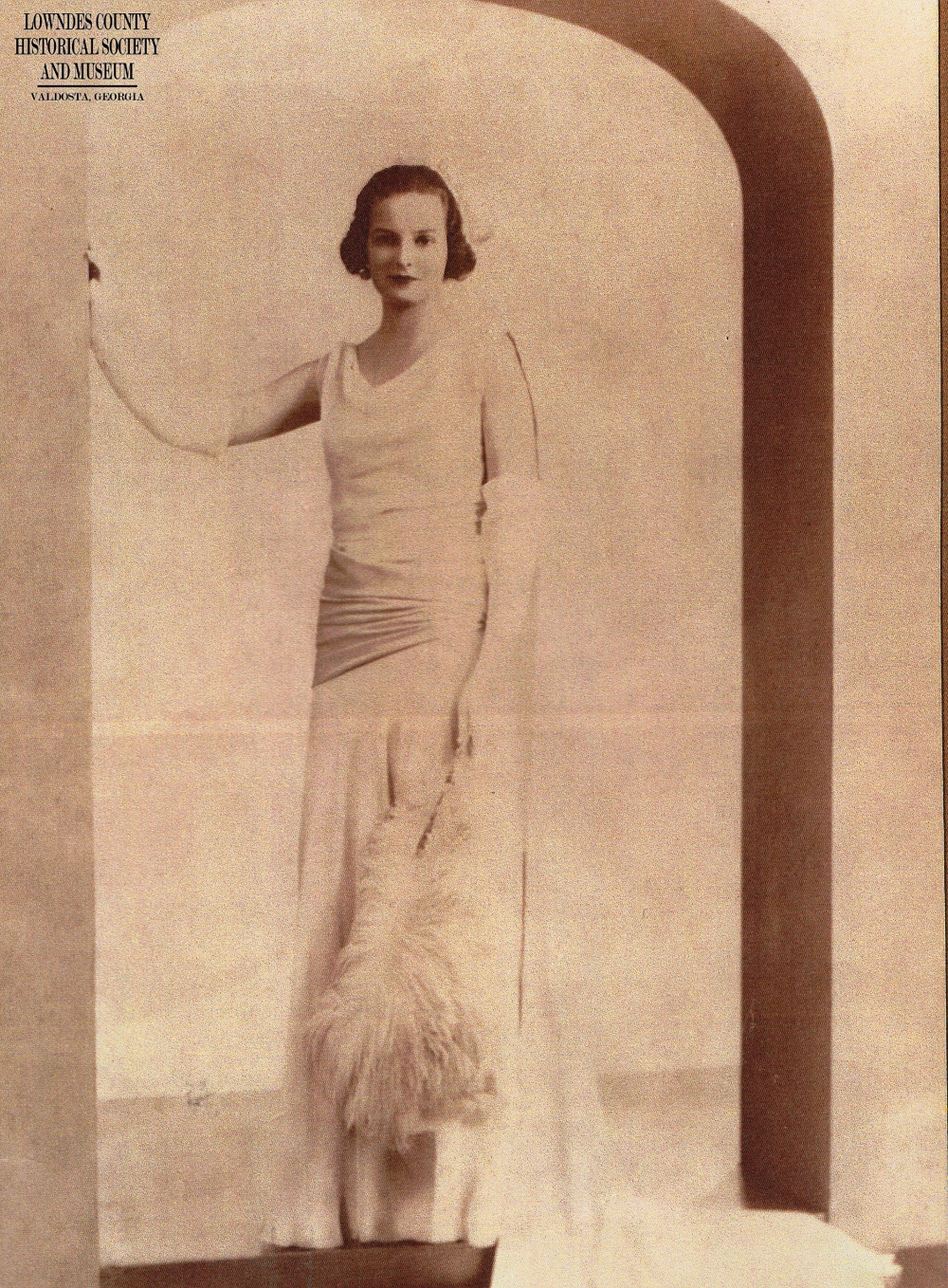 Eulalie Converse Harris, “Honey” as she was called by her friends was born in Valdosta, Georgia August 21, 1913 to the parents of Mr. Richard Harris (1876-1946) and Eulalie Lang Converse Harris (1893-1970) of Valdosta, Georgia both of which are buried in Sunset Hill Cemetery. Their son and Honey’s brother Richard Converse Harris Jr. (6 Nov. 1914-17 March 1945) is also buried in Sunset Hill Cemetery. He was killed in China during WWII while serving as an flying officer with the U.S. Air Transport Command. She grew up in a house on the 300 block of Patterson Street near her uncles houses; however, there are not many surviving photos of this grand home due to a fire. Her maternal grandfather, William Loraine Converse was also a native of Valdosta and Converse Hall at Valdosta State University is name after him. Her great grandfather and grandmother, Albert and Mary Converse were early citizens of Valdosta.
Eulalie Converse Harris, “Honey” as she was called by her friends was born in Valdosta, Georgia August 21, 1913 to the parents of Mr. Richard Harris (1876-1946) and Eulalie Lang Converse Harris (1893-1970) of Valdosta, Georgia both of which are buried in Sunset Hill Cemetery. Their son and Honey’s brother Richard Converse Harris Jr. (6 Nov. 1914-17 March 1945) is also buried in Sunset Hill Cemetery. He was killed in China during WWII while serving as an flying officer with the U.S. Air Transport Command. She grew up in a house on the 300 block of Patterson Street near her uncles houses; however, there are not many surviving photos of this grand home due to a fire. Her maternal grandfather, William Loraine Converse was also a native of Valdosta and Converse Hall at Valdosta State University is name after him. Her great grandfather and grandmother, Albert and Mary Converse were early citizens of Valdosta.
She attended the Washington Seminary, in Atlanta, Georgia, Finch Finishing School in New York, and finally the Princess Mestchersky Fashionable School in Paris. Upon completion of the school, she traveled to England. There she was prepared to be presented to King George V and Queen Mary of Teck, June 1935 in the Court of St. James.
Debutantes being presented on this very formal occasion were held to strict rules in court apparel including colors, white or nearly white or soft colors for unmarried; however, those in morning could wear black. A long dress with a train was required but how long and wide were also regulated by the queen of court as well and headdresses. A low cut dress was mandatory and no matter how cold it was outerwear was not permitted. Unmarried had to be accompanied by her sponsor who was a woman held in high esteem and was often her mother. In addition, debutantes were also sent to classes to learn the correct procedures for being presented such as the low bow, the hand kiss, backing out of the court. The practice of holding these court levées at the St. James Palace was discontinued by British Monarch in 1939.
A partial letter was received with the dress which explains her preparations for the very special occasion. In her letter she writes:
“Attended Princess Mestchersky’s School (in Paris) , spent Xmas holidays at Davos Platz Switzerland, enjoyed the winter sports- Easter holidays, motoring thro Southern France with Elinor Ryan and her chaperone Miss Gray, there thro Italy, down to Capri, attended Internation horse show in Rome, thro Switzerland to Paris- found her ——– [mother or brother] in London Eight of May stayed at May Fair Hotel- school mate Lady Joan Hope added greatly to the pleasure of her visit together they selected their dresses for the presentation. After visiting several court dresses makers Eulalie selected a deep cream satin els from the court dress maker, Roselleary who was most careful to fill every regulation- there she also got the her court head dress the three ostrich tips and tulle- there were several fittings, the getting of foot wear to match and the selecting of her fan from Deenelle Roy’s she got a large deep cream ostrich fan to match- the appointments for the lessons in curtsying had to be arranged- Voconi, the fascinating blond Italian is the ideal person for this- one finds her studio ______.There the day finally arrives the appointment at the hair Beauty Parlor comes first then the complete outfit is put on and pictures made- how nice it —-ed have him do this the day before but our time was limited- Spreaiglit of Bonds St. made the above personal pictures- after this the American and English Press had their appointments various friends drop in to see just exactly how you [looked] we had several dear friends [visit}us that afternoon for tea our little setting room, it was so cosy (sic)– At seven thirty went with Elizabeth Morgan to the Palace…….After leaving Palace went to Lady Cecil.”
Later while visiting a friend in Cedartown, Georgia her host gave a party and invited many eligible bachelors. During this event she became reacquainted with an old friend whom she had lost touch, John Philips Pickett of Cedartown.They were later married July 26,1940 and resided in the Pickett home in Cedartown shown in the photo below.
Gown
The gown is a floor length dress, sleeveless, deep cream satin and deep cream chiffon with satin swath at the hip. Dress bodice under layer is deep creme satin, fastens on the left side with 5 hooks and handmade eyes. The overlay is made of deep creme chiffon with a deep neckline that folds into a cowl draping. Shoulder straps twist and form a deep v back. The waistline is satin pleated and closes with hook and eye. Hip swath is also of satin and accents the waist/hip area. It is constructed like an infinity sweater, bottom of swath 35 ½” circumference, and then ends are sewn together contorted to form a v to enhance the draping effect and is approximately 11” wide. The dress skirt attached to the bodice and is fully lined in the satin with chiffon overlay. The chiffon is cut on the A-line but extremely full-188” and the bottom right-hand side fabric is pieced to give full circle for draping effect, though this piecing is unnoticeable. Gussets on each side in an upside down v-shape [21 ½” from hem] give even more fullness_88” extra to the hem. Overall length from center back neck is 57 ½”.
The Train
This deep creme chiffon train is enhanced with the side satin banding that is 2 3/4″ wide at the top and graduates to 7 inches wide at the hem line. The top width is 14 ¾” and the hem line is 137″ wide. The entire train is 81 1/2” in length.
Two draped layers of crepe form a V-collar cowl with rolled hem. The center chiffon panel V’s 39″ from the neckline.This v points to an graceful upside down v gusset in the chiffon to add a romantic flair to the train. There is also a satin V in the boarder of the train which is 43 ¼” from the top. Bottom rolled hem is machine stitched. Seams done w/machine straight stitch approximately 1/8”.
To secure the train to the dress ,there is evidence of a 1/4″ wide satin ribbon on the wide satin ribbon boarder at the top, as well as 4 1/2 ” long slots that are handrolled hemed to put the straps of the main garment through and secure it to the dress.
The ostrich feather hand fan shown in the photo is in the possession of relatives. The museum is also not in possession of the gloves. This item is presently on display on the main floor of the Lowndes County Museum and is scheduled for conservation assessment.
Click on the thumbnails below for larger image.

